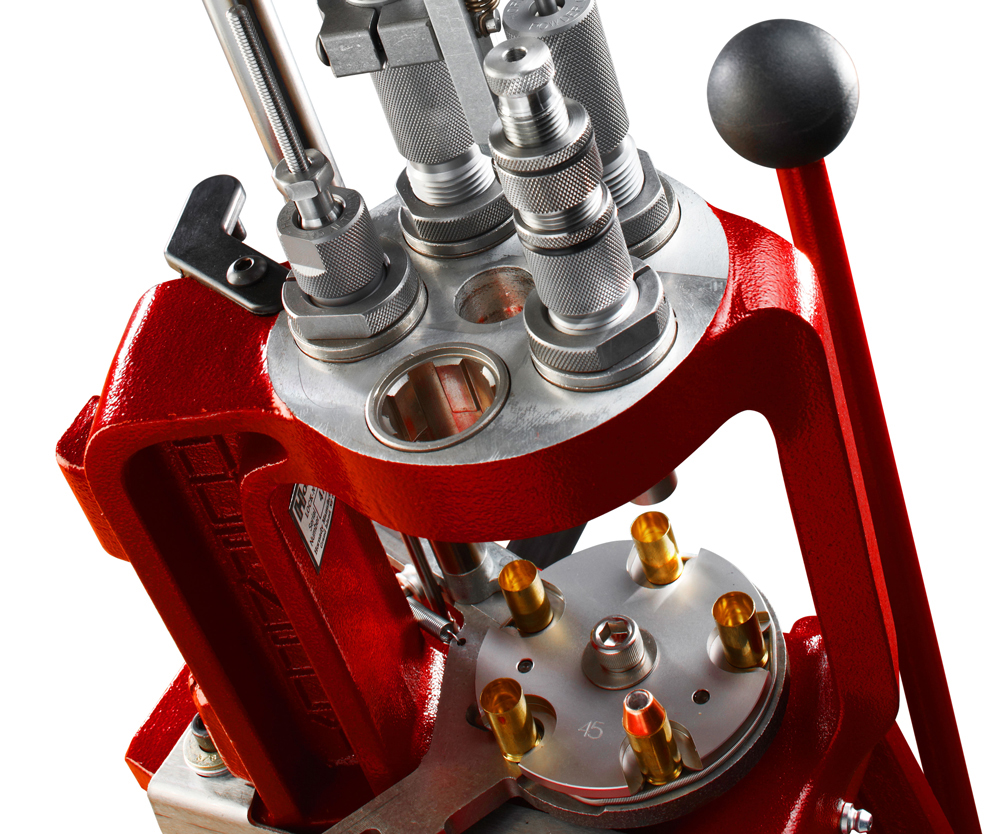Progressive reloading presses are speedy and efficient ammo-creating machines, and here’s a few tips on getting the most from yours. READ MORE
Glen Zediker
A “progressive” reloading press is a stellar invention. Originally conceived for use in commercial loading, the consumer segment latched onto them for the simple reason that those who consume mass quantities of ammo needed to take some of the time and tedium away from the necessary process of handloading. They were no doubt popularized with a lot of help from those involved in the (then) new sport of practical pistol shooting.
Clearly, if you think 1000 rounds is a reasonable expenditure in a day, you’ll probably be loading for your handgun on a progressive. However! They work for rifles too.
A question most have, or have had, is whether rifle ammo loaded on a progressive will shoot as well as that loaded up on a single-stage. If you have had that question, this article will help you answer “yes.” Some concerns using progressives revolve around overcoming some of the lack of control we can have using single-stage, stand-alone tools.

The name “progressive” comes from the machine’s rotating shell plate that progressively moves a cartridge case from one step in the process to the next, from start to finish. Each pull of the press handle advances one case, another is added, and so on. A loaded round emerges at the end of the ride. Along the way each routine step in the reloading process gets done: decapping, sizing, priming, propellant dispensing, bullet seating. There are varying levels of automation, corresponding with varying levels of complexity, corresponding with varying levels of cost. Some require more or less user-supplied input (manual shell plate indexing, and so on) while others are near about hands-free, with case and bullet feeders and the like.
It’s a bench-mounted ammo assembly line.
As started on, each essential op is supplied by a toolhead that has four or more tool stations to correspond with the openings on the shell plate.
Most progressives I’ve seen arrive complete and ready to set up: all you need, all it needs. Take a look at what they’ve given you.
Get “good” dies. Most progressives will accept any 7/8-14 threaded die. Feel free, and encouraged, to use the “better” sizing and seating dies, just as you might for a single-stage press.

If it’s possible, upgrade the powder meter. This can often be done using a “conversion kit” if the press isn’t already outfitted with linkage that will cycle another powder meter operating handle. A good propellant dispenser always makes a difference!
Address primer pockets. The priming operation inherent in a progressive doesn’t provide the feel of a stand-alone tool. That’s not a problem at all if all primers are all seated fully. To help ensure that, I say it’s wise to run a primer pocket uniformer. That way, the pocket will be what it should be, so the priming operation should “automatically” result in a properly-seated primer. Sometimes adjustments to the mechanism are necessary, by the way.
Keep the press pieces clean and lubed. Most function issues come from neglect here. Remember that all ops revolve around the revolution of the shell plate so keep it clean and lubed appropriately. Pay attention especially to the priming mechanism.
And mount a progressive securely. There is a huge amount of pressure and stress involved especially on a “big” one. Think again about how many tasks are being processed each stroke, and consider those processes, and it’s clear that this big bad boy best be fastened down. It’s also noticeably easier to operate a progressive when it’s rigidly mounted. Press op feel greatly improves.
Reasons not to use a progressive? Not really, or none that really affect ammo quality. For me it’s primarily stepping up to the level of trust necessary. Single-stage? It’s all and each done one at a time. Chance for a mis-seated primer or short-charged case are more remote. Keep a close eye on results using a progressive. Don’t get either in too big a hurry or complacent. I check each round after the fact, looking mostly for high primers.
The more pre-progressive case prep you do (maybe) the better. Much of that depends on what you routinely do to or for cases. Trimming, for instance, primer pocket cleaning, primer pocket uniforming, and on down the list. The main reason I don’t use progressives more than I do is because I radically slow them down! All those ops are stand-alone station processes.

The closer your starting point (sizing a clean case) is to your ending point (seating a bullet) the better a progressive will reward you.
Last: Keep a close watch on supply levels! The efficiency of a good progressive creates a time warp for me. I am always surprised how quickly primer and propellant supply empty. Warning buzzers are most welcome!
Check out PRESSES HERE
Find a DECAPPING DIE
Glen’s books, Handloading For Competition and Top-Grade Ammo, are available at Midsouth HERE. For more information about other books by Glen, visit ZedikerPublishing.com and check out more articles and a brand new book on AR15s! HERE.









